Ferrari 812 GTS, Porsche 911 GT3 Touring, Lamborghini Huracan STO… Without wanting to come over all ‘influencer’ (please like and subscribe!), I’ve driven some amazing supercars recently. Yet none of them outshone the Lotus Elise.
My first Elise was an orange Elise Cup 250: no infotainment, a manual gearbox and a rudimentary roof. Its mid-mounted Toyota engine produced a modest 248hp. And, after gorging on ‘too fast for the road’ exotica, it was the most palate-cleansing, life-affirming car I could have hoped for.
The brilliance of the Elise is evidenced by the fact that it stayed in production for 25 years. With help from Patrick Peal, former Head of Communications at Lotus, let’s rewind to 12 September 1995 – the day the Elise was revealed to the world.
The Lotus Type 111
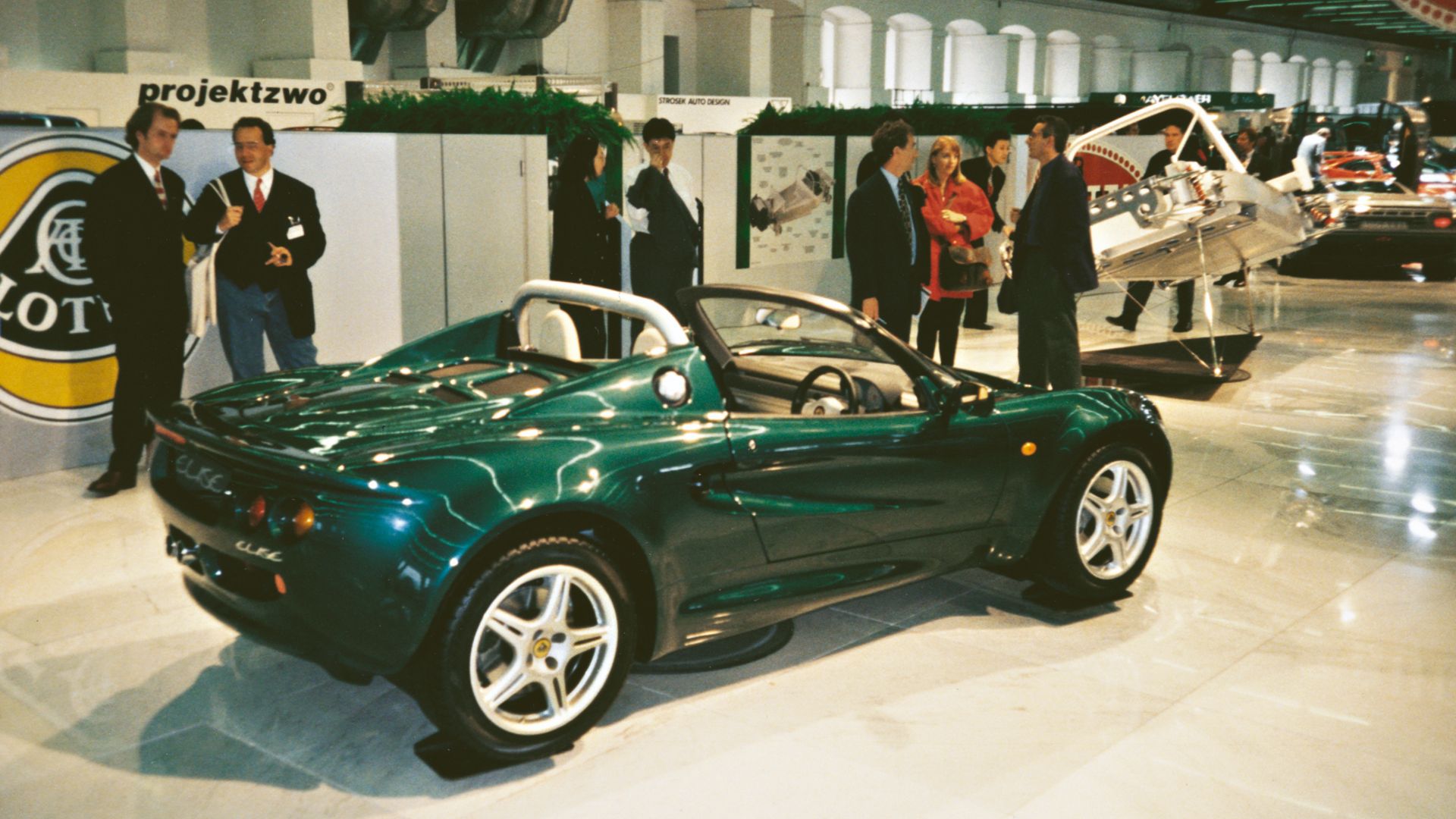
The new car was originally to be called Type 111 – pronounced ‘one-eleven’ – following a long-established Lotus tradition. As such, it would have sat between the Type 110 (a record-breaking carbon fibre bicycle) and Type 112 (a stillborn Lotus F1 car for the 1995 season).
Romano Artioli, however, had other ideas. The then-chairman of Lotus and Bugatti preferred a name to a number and proposed ‘Elise’ – inspired by his granddaughter Elisa. The promotional material was hurriedly redesigned, a trademark was registered and young Elisa was enlisted for the launch.
Patrick, now CEO of East Anglian Air Ambulance, recalls: “I had even purchased the number plate M111 LCL to be used on one of the disguised prototypes, and already hinted to the media that this was going to be the name of the new car! In hindsight, Mr Artioli was right. Elise was the perfect name.”
First seen in Frankfurt
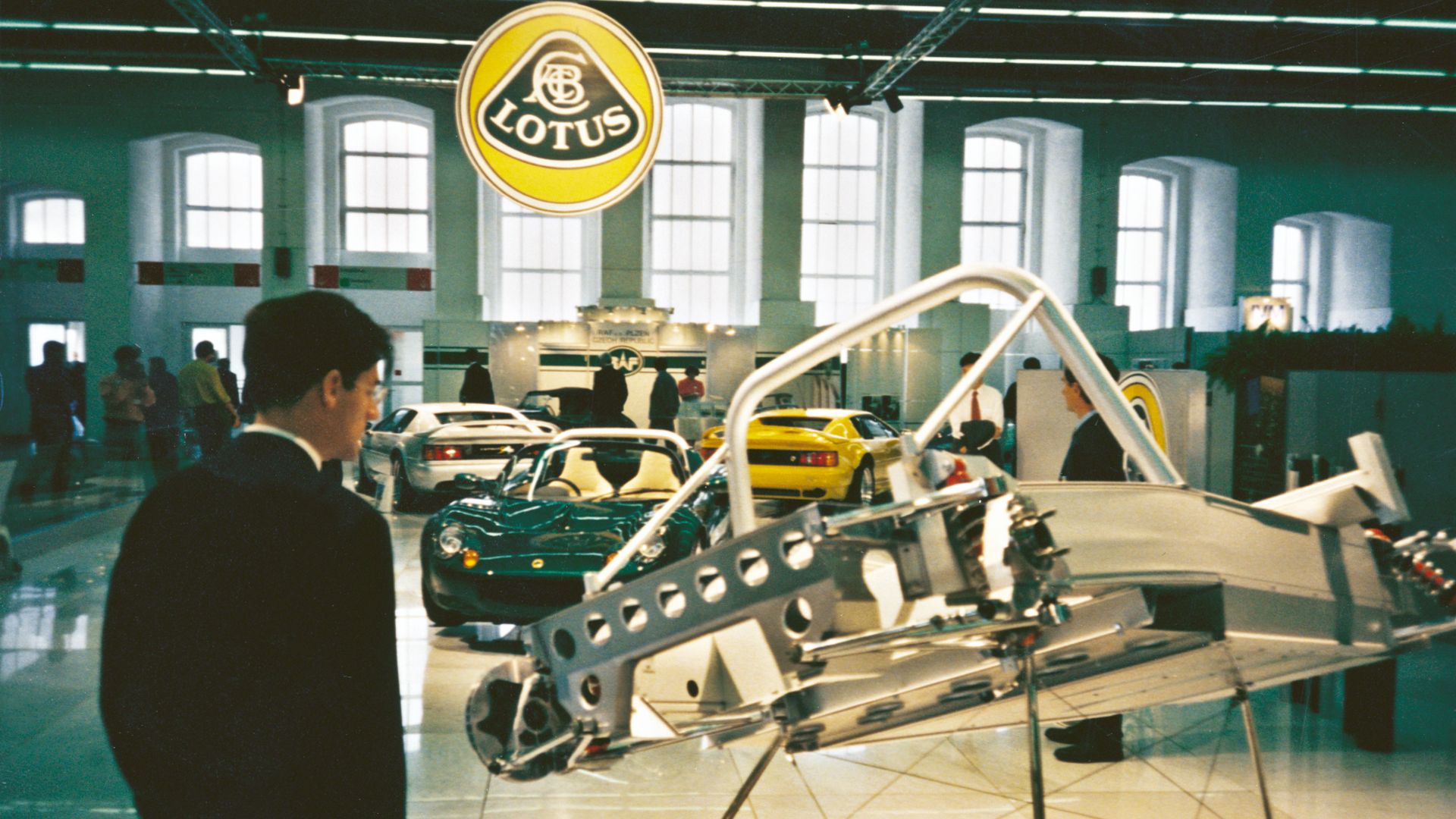
The plan for unveiling the Elise was changed late in the day, too. The car was initially due to debut at London Motorfair, but a month before the Frankfurt Motor Show, Artioli decided to reveal it there instead. He wanted the biggest stage possible for the little Lotus.
The Elise’s aluminium core was revealed before the car itself, as Patrick explains: “We decided to unveil the chassis first, complete with suspension, brakes and subframe. We wanted the world to fall in love with the Elise’s technology and the engineering as well as with the actual car. Plus, the whole structure would become a talking point and an advertisement for Lotus Engineering.”
Patrick also came up with a clever talking point at Frankfurt press day: “I even kept a throttle pedal in my jacket pocket which I would produce during conversations to show what extruded aluminium technology was all about. It was so light and neat – it weighed no more than a small wallet and summed up the car and its innovation perfectly!”
Keen as mustard
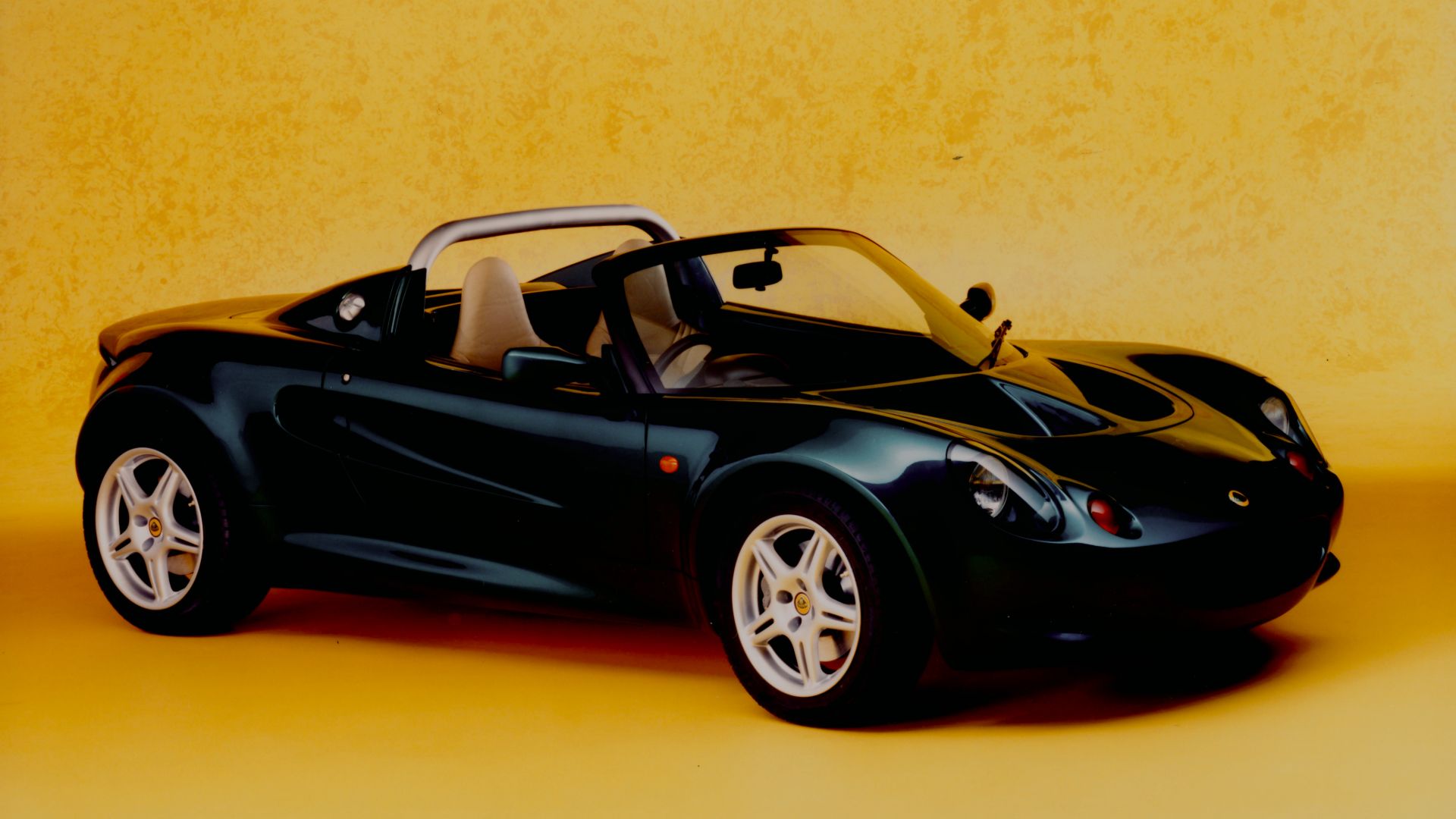
The Frankfurt show car was painted metallic green with a tan interior, and the official press photos were hurriedly taken overnight in a studio near Norwich.
“We needed a background to offset the racing green of the car,” says Patrick. “The obvious choice would have been a conservative colour such as grey, but Lotus doesn’t follow convention and we chose a bright mustard yellow.
“It brought out the shape, lines and particularly the colour of the car perfectly and of course it was also a reference to the Lotus logo colours, the Team’s F1 racing cars livery of the 1960s and, more subtly, the spice famously grown in Norfolk!”
‘Like being on the F1 grid’
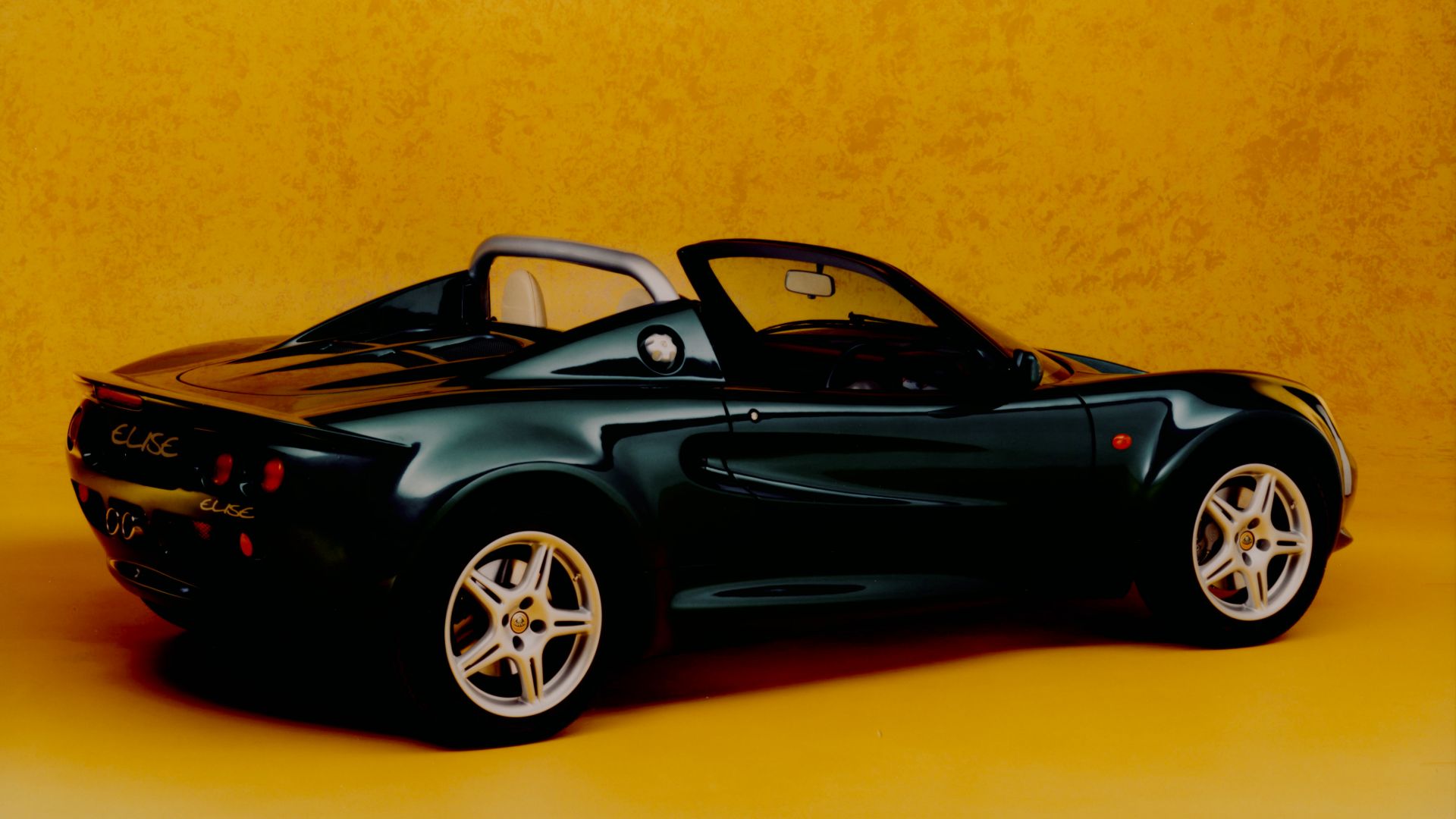
The Elise was the deserving star of Frankfurt 1995 and glowing reviews followed soon afterwards. Its success also kept Lotus afloat for years to come.
Patrick compares it to being on the F1 grid in the 1970s, saying: “Other teams would always keep an eye on Colin Chapman to see what his latest F1 car would be like. They never knew what to expect, other than it would be pioneering and they were always taken by surprise. It was the same at the Frankfurt Motor Show.
“We knew the Lotus Elise could revolutionise the car industry and, sure enough, it has. It was a brilliant time and I am so proud to have been part of it.”
A lasting legacy
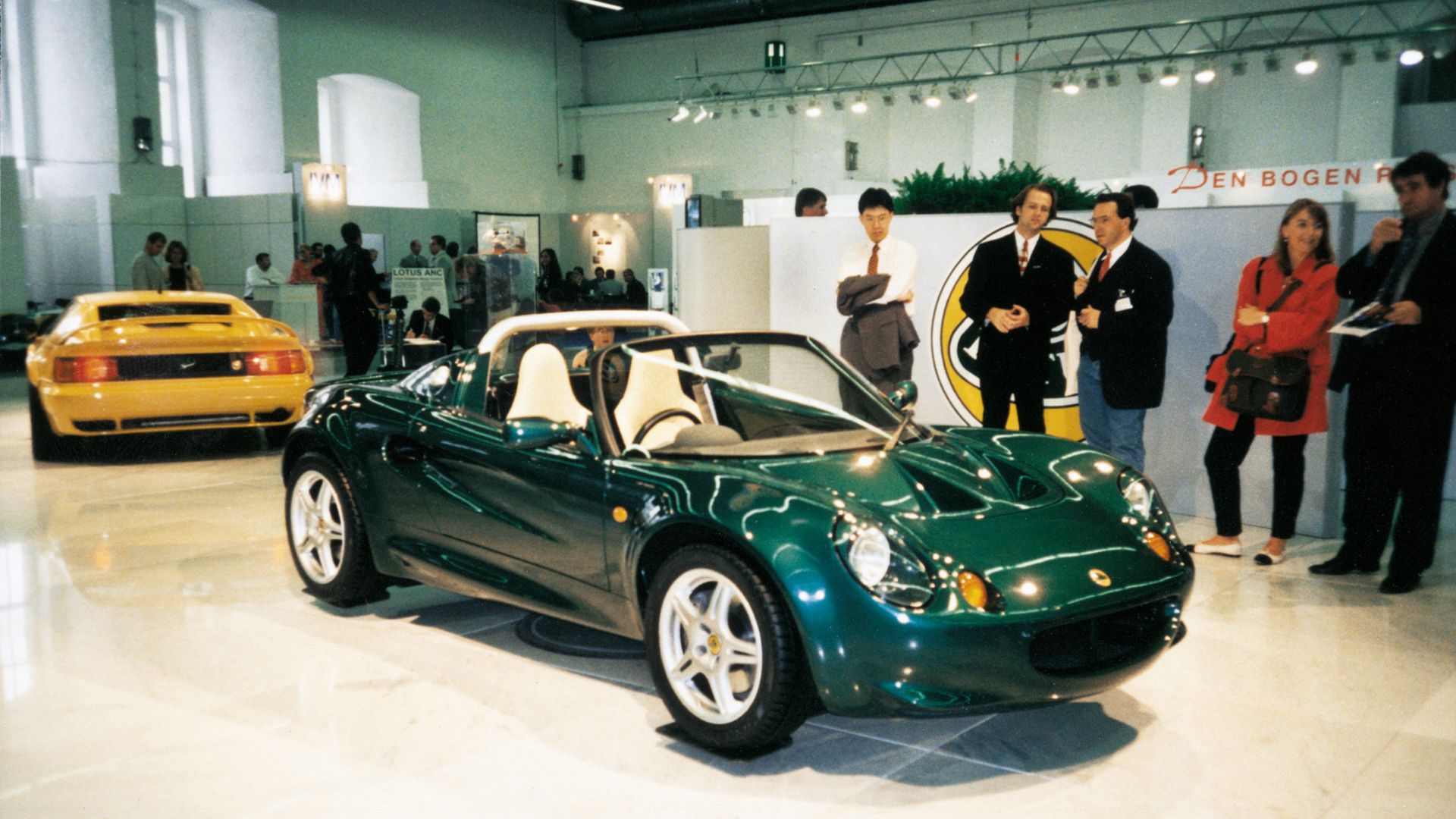
The Elise has endured through three generations and spawned the hardcore Exige coupe, along with special editions such as the skeletal 340R. The basic recipe, though, hasn’t changed – and as car enthusiasts, we should all be thankful for that.
Back to that dark December day… The clouds were the colour of a day-old bruise and the sleet was coming at nearly 90 degrees. A supercar would have frustrated and intimidated here, but the Elise simply kept calm and carried on. It transformed a difficult journey into a treasured memory.
Here’s to the Lotus Elise, then. Gone but certainly not forgotten.
ALSO READ:
Lotus Esprit S3 review: Retro Road Test
New Lotus Eletre electric SUV revealed in London



[…] ‘father of the project’ Richard Rackham and his team were preparing for the first run of the Lotus Elise prototype – aka Proto […]
[…] Remembering the launch of the Lotus Elise […]
[…] Remembering the launch of the Lotus Elise […]
[…] was the 1995 Frankfurt Motor Show and the Elise was its main talking-point. Bonded aluminium construction, following the ‘Simplify, […]
[…] the Emira, Lotus promises a step-change in quality, comfort and connectivity. Features to get S1 Elise owners scratching their heads include rain-sensing wipers, parking sensors, cruise control and keyless […]
[…] the Emira, Lotus promises a step-change in quality, comfort and connectivity. Features to get S1 Elise owners scratching their heads include rain-sensing wipers, parking sensors, cruise control and keyless […]